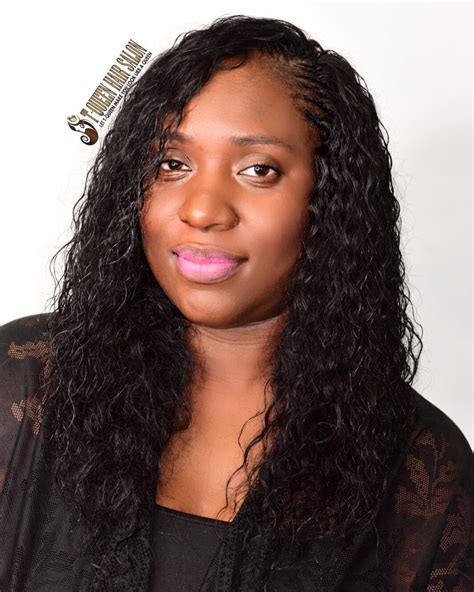Introduction
Human hair tree braids, a captivating coiffure that mimics the intricate branches of a tree, have been captivating hair enthusiasts for centuries. Originating from the African continent, this elaborate style has transcended cultural boundaries, becoming a symbol of beauty, self-expression, and cultural heritage.

Evolution of Human Hair Tree Braids
The history of human hair tree braids is deeply intertwined with the social and cultural tapestry of various African communities. Traditionally, these braids were worn by young women as a rite of passage into adulthood. The intricate designs and embellishments often carried symbolic meanings, representing tribal affiliations, societal status, and spiritual beliefs.
With the African diaspora, human hair tree braids spread to the Americas and Europe, where they gained popularity among communities of African descent. These braids became a symbol of cultural pride and resistance, particularly during the era of slavery and oppression.
In recent decades, human hair tree braids have undergone a resurgence in popularity, becoming a mainstream fashion statement. Celebrities, models, and fashion icons have embraced this style, showcasing its versatility and timeless appeal.
Types of Human Hair Tree Braids
The world of human hair tree braids is vast and diverse, with countless variations to choose from. Here are some of the most popular types:
-
Fulani Braids: Originating from the Fulani people of West Africa, these braids are characterized by their intricate patterns, colorful beads, and cowrie shells.
-
Ghana Braids: Also known as box braids, these braids are created by parting the hair into square sections and braiding them tightly from the scalp to the ends.
-
Tree Box Braids: Similar to Ghana braids, tree box braids feature intricate parting patterns that resemble branches and leaves, creating a tree-like effect.
-
Ombre Tree Braids: These braids incorporate multiple shades of hair extensions, creating a gradual transition from dark to light or vice versa, adding depth and dimension to the style.
-
Jumbo Tree Braids: As the name suggests, these braids are larger than traditional tree braids, providing a bold and voluminous look.
Benefits of Human Hair Tree Braids
Beyond their aesthetic appeal, human hair tree braids offer numerous benefits:
-
Protective Styling: These braids effectively protect natural hair from environmental damage, breakage, and tangles.
-
Low Maintenance: Tree braids require minimal daily care, making them a convenient and time-saving option.
-
Versatility: Tree braids can be styled in various ways, from sleek buns to intricate updos, offering endless creative possibilities.
-
Hair Growth: The protective nature of tree braids allows natural hair to grow longer and stronger underneath.
-
Cultural Significance: For many people of African descent, tree braids hold cultural and historical significance, representing pride, heritage, and community.
How to Get Human Hair Tree Braids
If you’re considering getting human hair tree braids, it’s crucial to find an experienced and skilled braider. The process can be time-consuming, depending on the complexity of the style, but generally involves:
- Consultation and hair preparation
- Parting the hair into desired sections
- Braiding the hair extensions onto your natural hair
- Shaping and sealing the braids
Tips and Tricks for Human Hair Tree Braids
- Use high-quality human hair extensions for durability and a natural look.
- Keep the braids moisturized with a leave-in conditioner or oil to prevent dryness.
- Avoid excessive brushing or combing, as this can loosen the braids.
- Use a satin pillowcase or bonnet to reduce friction and prevent breakage while sleeping.
- Get regular touch-ups to maintain the integrity of the braids and prevent unraveling.
Table: Popular Human Hair Tree Braid Styles
| Braid Style | Description |
|---|---|
| Fulani Braids | Intricate patterns, beads, and cowrie shells |
| Ghana Braids | Tightly braided from scalp to ends |
| Tree Box Braids | Parting patterns resemble branches and leaves |
| Ombre Tree Braids | Gradual transition of hair shades |
| Jumbo Tree Braids | Large and voluminous braids |
Table: Benefits of Human Hair Tree Braids
| Benefit | Explanation |
|---|---|
| Protective Styling | Protects natural hair from damage |
| Low Maintenance | Minimal daily care required |
| Versatility | Can be styled in various ways |
| Hair Growth | Promotes natural hair growth |
| Cultural Significance | Represents pride and heritage |
Table: Tips for Getting Human Hair Tree Braids
| Tips | Explanation |
|---|---|
| Find an experienced braider | Ensures quality workmanship |
| Use high-quality extensions | Provides durability and natural look |
| Keep braids moisturized | Prevents dryness and breakage |
| Avoid excessive brushing | Preserves integrity of braids |
| Get regular touch-ups | Maintains braids and prevents unraveling |
Conclusion
Human hair tree braids are a timeless and versatile coiffure that continues to captivate hair enthusiasts worldwide. With their intricate designs, cultural significance, and protective benefits, these braids have stood the test of time and remain a symbol of beauty, self-expression, and cultural pride. Whether you seek a protective style, a bold statement, or a connection to your heritage, human hair tree braids are a captivating option that will turn heads and inspire awe.
